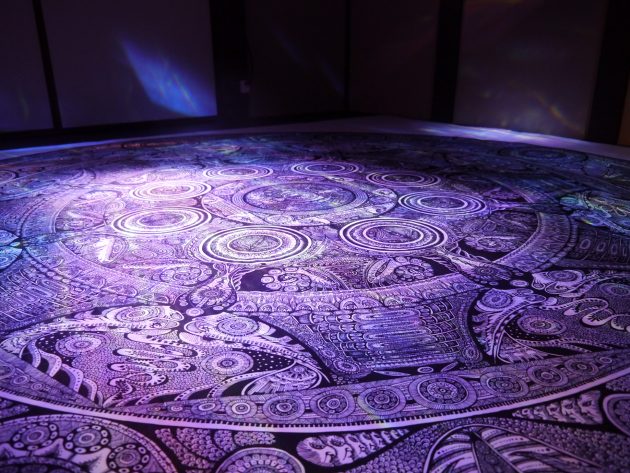
Hinako Yukawa
Protecting and preserving the traditional appearance of a machiya style townhouse that was formerly a kimono merchant’s, The Terminal Kyoto offers a space where knowledge, culture and art converge and intertwine. Minako Hiromi’s new exhibition “An every-day life of reminiscence” (11.2–12.1, 2019) showcases her mesmerizing mandalas, each of which invite the viewer to explore the hidden stories in their stunning, hand-drawn detail. The works are exhibited in both floors of The Terminal along with Japanese lacquerware by artist Hirotomo Doi. Hiromi’s mandalas are a product of her meditative work process, as the artist revealed that drawing them feels as if her hand is tracing lines that are predetermined. Readers of Kyoto Journal may recall the fabulous golden mandala that graces the cover of our Devotion issue (on sale now at the venue).
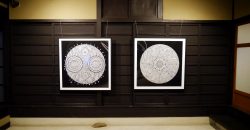
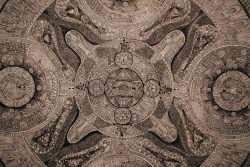
The exhibit opened with a collaborative live performance by three artists: award-winning flamenco dancer Shiho Morita, Tuvan instrument-player and khoomi singer Masahiko Todoriki, and projection performance artist Akito Sengoku. With Hiromi’s “Banbutsu-Engi Mandala” on white fabric serving as backdrop and screen, the machiya’s living space was transformed into an immersive stage.
Morita and Hiromi have been long time acquaintances since their time in Sevilla, Spain. Hiromi recounted that one day, she saw the shadow of a twirling figure on her Mandala while working on the piece. Recognizing those movements, she contacted Morita saying: “I can see you dancing on my Mandala.”
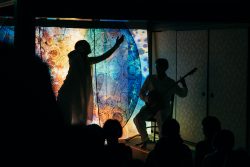
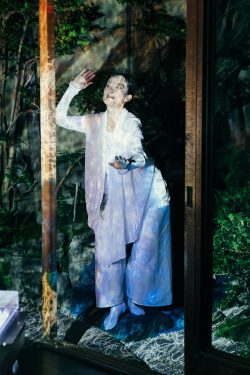
During the performance, Sengoku projected iridescent patterns and flowing colors onto the space using multiple overhead projectors and liquid colors on water, an art form coined “Time painting” by Sengoku himself. The foreign but strangely familiar sounds played by Todoriki on the Igil and Doshpuluur were in some way reminiscent of buddhist chanting in their rhythm, augmenting the experience of a meditative space with flowing colours.
Morita’s visceral movements echoed the southern Siberian music, only adding the scraping of her feet against the tatami to the soundscape. Making true Hiromi’s vision, she embodied a shadow born out of the Mandala. Her silhouette moving through audience and space while serving as a canvas for streaks of color and light, before finally vanishing between the trees of the garden.
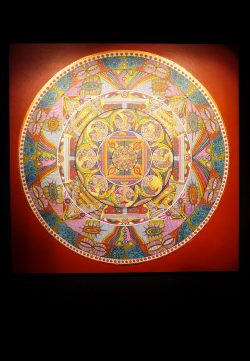
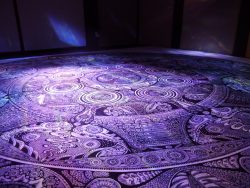
The exhibit coincides with the peak of the fall leaves season. After pondering over Hiromi’s artwork, sip a cup of tea in The Terminal’s café, which overlooks the wonderful garden.
Some of the KJ staff were also treated to an innovative–and, delicious—coffee ceremony by Hiromi’s friend, the lacquer artist Doi Hirotomo, the Another blog post is forthcoming!
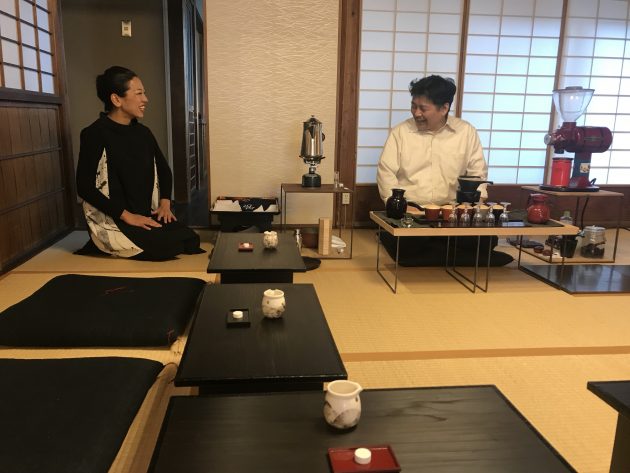
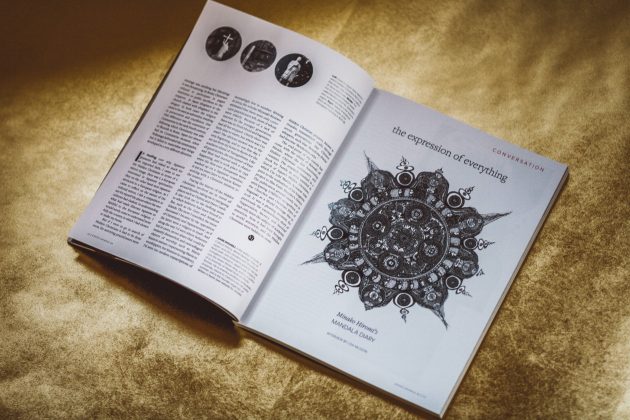
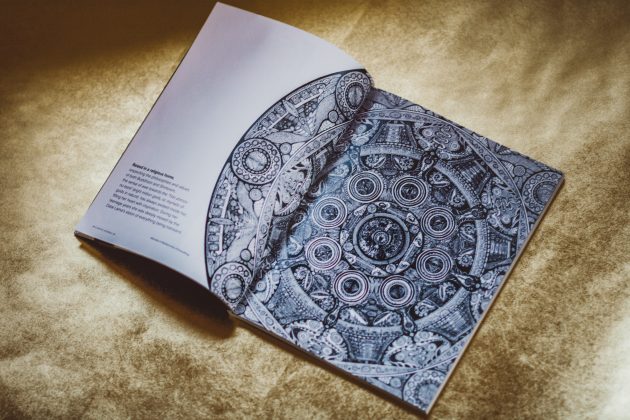

Hinako Yukawa is graduating in Media and Cultural Studies. She is interested in how stories – in literature as well as in other media formats – shape cultural understanding, political worldview, and self-perceived identities of communities.
Photography by Minechika Endo